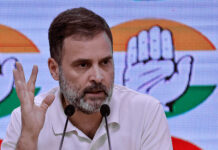Construction on the Ayodhya “museum of temples” choose an architect, and work progresses. The process of choosing an architect and starting the land search for the project has accelerated the creation of a “museum of temples” in Ayodhya, which would highlight customs at notable temples around the nation.
The government has determined that renowned architect Brinda Somaya would oversee the construction of the museum, which will span 50 acres on the banks of the Saryu River, authorities announced on Wednesday.
Prime Minister Narendra Modi’s suggestion to pursue measures in Ayodhya that would ensure pilgrims stayed longer once the Ram Temple’s construction was finished solidified the idea.
During a meeting with representatives of the Shri Ram Janmabhoomi Teerth Kshetra Trust on October 25, the PM proposed the idea and extended an invitation to attend the “pran prathistha” (consecration) ceremony scheduled for January 22, 2024, at the Ram Temple that is now under construction.
Officials described the project as Chief Minister Yogi Adityanath’s “dream project” and stated that visitors would learn about the history of India’s most important temples as well as the fundamentals of “Sanatan Dharma” at the museum.
Additionally, the scientific elements of the nation’s temple building will be highlighted at the temple museum.
According to officials, the goal is to create a multitude of facilities and tourist destinations because the number of devotees coming to Ayodhya will expand significantly following the opening of the Ram Temple.
Land for the temple museum is being sought after. According to sources, architect Somaya and her team recently visited two sites—one in Rampur Halwara and the other near Jamthara on the Saryu shore.
Currently, modalities are being investigated at all four of these sites, and one of the identified sites will be chosen.
“People, especially young people, will learn from the temple museum about the philosophy and reasons behind the creation of a temple at a certain location.
According to an official, it would also showcase the technologies employed in ancient India along with the significance of the devotional practices.
































